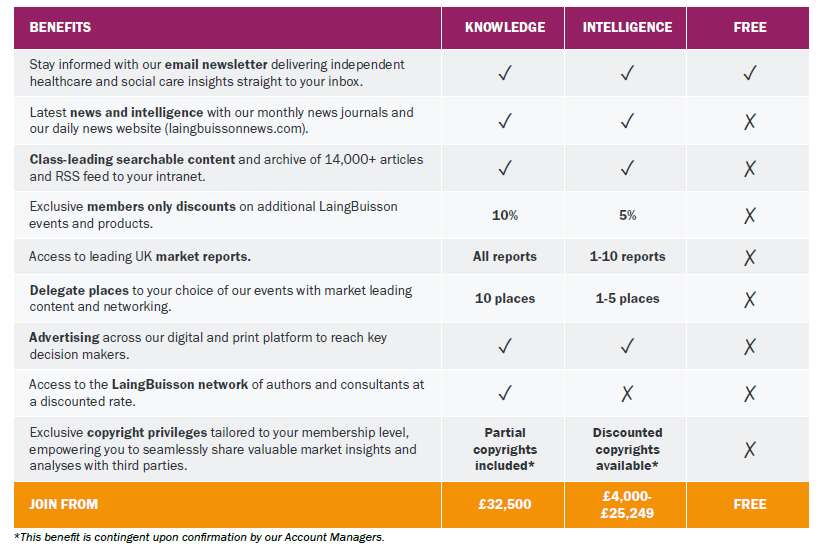Adult Specialist Care sector grasps growth opportunities in supported living
LaingBuisson has today launched the third edition of its respected Adult Specialist Care report
The report shows how this market, estimated to be worth £12.3 billion in the UK in 2017/18, has adapted to prevailing austerity during the years since 2010, using non-capped revenue streams from the social security system to support a slow but steady shift towards community-based service offerings.
In a sector where most service users require lifetime care, this has led cash-strapped local authorities to steer younger adults towards supported living in preference to residential care. While the comparative overall costs of these two options have not been quantified, supported living benefits from the availability of Housing Benefit to underwrite the property rental element, moving some of the cost to central government.
As well as being less costly to councils, supported living also tends to be preferred by service users and their families.
As a result, the sector has seen a slow but unstoppable shift from service provision in registered care homes to supported living services. While disenchantment with supported living has started to creep in with some commissioners, there is no indication that this trend will reverse, especially in light of the popularity and the financing of these services.
Spending growth on adult specialist care in residential settings has been sluggish over the last four years at a CAGR of 1.0% (negative in real terms) as volumes have declined, while spending on non-residential services has kept pace with inflation (CAGR of 2.8%). The focus of highest growth has been supported living (CAGR of 7.8%). Looking forward, growth prospects remain positive for supported living, with the government’s decision to continue to fund supported housing rents via Housing Benefit. Residential care spending will in all probability continue to decline slowly in real terms, though providers specialising in ‘high ticket’ residential services for people with the highest needs will be relatively immune from the shift to supported living.
As well as stimulating a growing service market, the continuing availability of Housing Benefit to fund supported housing is attracting a wider range of property investors seeking safe, index-linked investments. Formerly the preserve of the care home sector for older people, investors are now willing to consider portfolios of smaller scale properties, including adapted property, typically used for adult specialist care placements.
Overall, the Adult Specialist Care market remains the most fragmented of any monitored by LaingBuisson. The top ten players account for just 12.4% of the market. Furthermore, it is a market that relies heavily on public funds, apart from niche services for acquired brain injury and substance misuse, and private pay accounts for just 5%, the rest being paid by local authorities (72%) and the NHS (23%).
Profitability of adult specialist residential care remains adequate, with a weighted average EBITDAR of 22% for the major players for 2017, though it has slipped from 30% at the beginning of the recent period of austerity.
William Laing, report author said:
“A decade ago, many commissioners thought that almost all residential care for younger adults could be moved to supported living. While it is clear that some commissioners are less sure that supported living is the right solution for all, the prevailing trend in the market raises questions for independent sector operators providing residential care to younger adults. Not least, should they seek to protect their residential care home businesses, or should they reposition or diversify their offering into supported living?”
Find out more about the Adult Specialist Care report here







